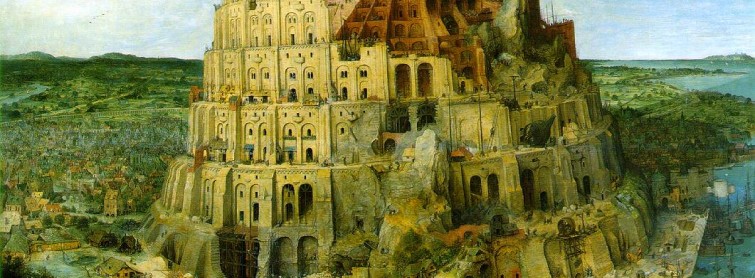What is Babel?
The familiar and slightly mystical story of the Tower of Babel can be found in Genesis 11 and tells the story of the origin of language.
According to the account, humanity was living united in a post-flood world, speaking a single language and building an empire. Scripture tells us that the people had migrated from the East to a place called Shinar, and had begun development there on their city. Amongst their building efforts, was a tower which was being built to reach the heavens and to ‘make a name’ for the new civilisation. Babel was designed not only as a mark of achievement but as a means of preventing diaspora, a plan which backfired.
When God sees the project, he sees that the people are becoming unrestrained in their achievements, and becoming limitless in their abilities. In an attempt to reign them back in, God confounds their speech, and disperses them throughout the world. The plan to prevent dispersion has resulted in exactly that. Because of humanity’s attempts, they are divided linguistically and geographically.
This biblical story is believed by many to describe a genuine, historical event that took place after the great flood, but what is the purpose and significance of the story, and did it REALLY happen?
What Kind of Story is it?
Babel has continued to both captivate and confuse audiences to this day. Historical linguistics has spent much time debating the idea of a single original language and anthropology has long sought to identify if living descendants remain from one race such as the descendants of Noah in this story. Much artwork has also been created in the name of Babel, including Pieter Brueghel’s famous painting, Anton Rubenstein’s opera and the novel Babel Tower. The story of the tower has been used in many different contexts, but the kind of story that it is at its core remains the same: it is an etiology.
Etiologies are stories that serve to explain the origin of something. Every etiology or origin myth functions as a description of how some new reality came into being.
In this case, the story explains the origin of language, and the multiplicity of human language that exists today. Genesis 1 and 2 function in the same sense, with several themes within them. For example, Genesis 1 and 2 serves to explain the origins of human life on earth, as well as the heterosexual relationship, humanity’s relationship to animals, pain in childbirth and more. The story of Babel explains the origin of human language and its variants as well as issues such as the competition between God and humanity. This theme first appeared in the story of Adam and Eve when they unlawfully ate from the tree of knowledge, and is repeated in the story of Babel. First century historian Josephus described Babel as a prideful, arrogant defiance against God and thus mirroring the fall in the Garden of Eden. The story also serves to explain cultural and geographical differences amongst humans and places Babel as the cradle of civilisation.
The Story’s Creation
Traditionally, the first five books of the bible have been attributed to Moses, but more recently a proposal has been made for the documentary hypothesis. This hypothesis suggests that the Yahwist source was responsible for the composition of Babel, particularly considering the Yahwist’s use of etiology in other parts of scripture. Use of wordplay including ‘Babel’ and ‘babble’ is also a signature tactic employed by the Yahwist.
The Ziggurat at Babylon is often cited when discussing matters regarding Babel. The Etemenaku was the name of a 200 feet high temple, or ziggurat, famously rebuilt by Nebuchadnezzar. Tradition states that the story of the Tower of Babel was likely influenced by the construction of this mammoth Ziggurat which was constructed during the Babylonian captivity of the Hebrews.
The account in Genesis appears in other sources, some of which give more detailed accounts about the Tower than the Biblical account. Other sources for the story include the Book of Jubilees, Josephus, The Book of Mormon and the Midrash. Parallels to the story also exist in Sumerian myth, Irish folklore and Central American legend.
Was it Real?
There is a long tradition of material surrounding the Tower of Babel, both biblical and non-biblical. We would expect a wide range of sources from an event that took place in history, as we see in this circumstance. Though the story was composed and presented by sources that had their own theological concerns, there is no reason to doubt that the biblical description of the event did not take place historically as well as theologically, and the existence of material within other ancient civilisations only serves to further confirm the Bible’s authenticity on the matter. Language changes and variations in existence today, ziggurats and tower legends are all more than substantial confirmations of the events that took place at Babel.
To honour God’s creation, be sure to sign the petition to establish Creation Day as an official holiday!

